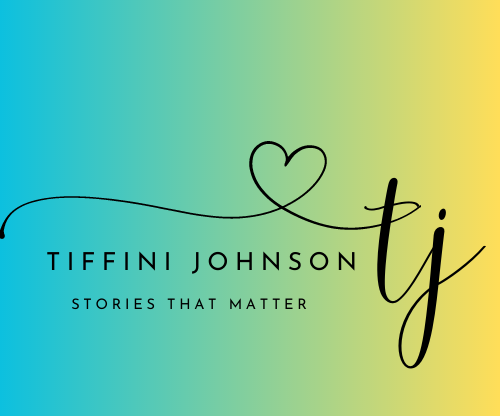The Butterfly Signature

A signature reveals something about the writer. There are really clean, pretty signatures; there are unreadable “doctor” signatures; there are signatures where an i is always dotted with hearts or circles; there are “loopy” signatures with big swirls. Science has thoughts on links between signatures and personality traits; some of their intrepretations feel true, but others don’t. For example, signatures that seem to be straight as if on on invisible line indicate someone who is precise and controlled; an ‘o’ or ‘a’ that are not fully closed indicate someone who is collaborative; signatures that tend to tilt upwards only at the end suggest someone optimistic; if the ‘i’ is dotted, it suggests someone for whom details matter. Including a long line at the bottom hints at determination and perseverance. If it’s illegible, it indicates a fast, busy mind. These are things that I see in my signature — and that feel right. The larger the signature, however, the more confidence the person is said to have. I waver back and forth on this one: I am fairly confident in my ability to write, to teach and to speak in front of groups. And, no matter what the task, I typically believe that if I try long and hard enough, I can accomplish it. In a way, then, that is confidence. But that confidence is surface level: dig beneath the work ethic to whether or not I truly believe I’m on the same level as anyone else and things get grey fast. Having a highly stylized first letter suggests efforts to place value on self (my deepest desire is to build connection, and to engage with others; nothing I do is, at its core, intended to be about me. I share my story because doing so encourages others to share theirs; I write about abuse because it might tell someone else they’re not alone).
This has been my signature for years:

The signature wasn’t something that I just did, I spent time on it. My instinct, for example, is more “normal”, less distinctive… but it didn’t feel right, and part of the reason it didn’t feel right is because letters were left alone: the “T” and “J” were not connected to any other letters which made it feel like the whole signature was somehow standing alone. The goal was not to create an illegible signature; the goal was to create something connected. It took a bit of trial and error as a teenager to create a “T” so that it looped around to form the “L”, which was then used to form the “J.” I had the same problem feeling like the “n” was abruptly ended, so I looped it…. but then that felt like the end of the looped line was just … ended. And so I added the butterfly… and that felt right…. for a lot of reasons.
I was five years old the first time my dad hurt me. I remember sensations more than an exact timeline of that moment: I remember how heavy he was; his fingers were rough; he told me to be quiet; there was a blanket with a lion hanging on the wall; I bled. He tried to help me clean up, but I said, it’s okay, it’s okay. I don’t remember starting a bath myself that young, so maybe he started a bath, I don’t remember, but I clearly recall sitting in the bathtub, my body aching, crying. From that point on, I was not the same person. In many ways, the other adults around catered to me: my grandmother took me to Bahamas on a cruise, teachers loved me. When I started writing, it was encouraged by virtually everyone. I don’t have a good reason for why I didn’t tell, not even when I was young. My mother was the biggest champion for my siser and I: I could have told her. My sister and I were best friends: I could have told her. But instability ruled our lives: he was arrested multiple times and, when he was, he was gone. Sometimes, he just vanished in thin air: we’d wake up and he’d be gone. He hadn’t been arrested, but had taken off — once he went to Vegas, I have no idea where he went most of the time. If he wasn’t there, it didn’t make sense to tell: why say anything if it’s not happening; he’s gone? And, when he was home, I was terrified.
And alone.
Like the caterpillar creeping along, doing nothing but eating and sleeping, preparing for the time she’d spend hiding, I inched my way forward, one day at a time. I didn’t know there was another way; I didn’t know what was normal and what was not; all I knew was what was. The caterpillar is so focused on making it through the next leaf that she doesn’t think about how big the world is around her or everything she can’t see. Eventually, the caterpillar, she finds a nice, sturdy place and starts shedding her skin to reveal the chrysalis. Shedding her skin to reveal the chrysalis.
For me, my chrysalis was writing, and the characters who made me believe I had friends. When I was hiding behind the pen, I was part of the in crowd, I was one of the group. When I was not writing, I was awkward, inept and inferior. I was around ten when my dad said, I’m the only one who really knows you. I’m the only one who sees how you really are. It felt true because he was the only one who knew why I couldn’t stop shaking; he was the only one who knew why I cried at the drop of a hat. I couldn’t scream: he warned me against it but, even when I tried, there was a lump in my throat that kpet me from making any sound at all. As I grew older, he’d put his elbow against my throat and the weight of it made me feel like I was choking. He said there’s nothing I can’t do and that felt true, too. He told me I wasn’t ever going to find someone unless I learned how to make him happy and, when he was angry, which was a lot, I deserved to get in trouble. God hated selfishness, and I was very selfish. While I wasn’t always physically hurting, my heart was never at rest… and because it was a secret I couldn’t share, I felt as alone as the caterpillar hiding in the camoflauged chrysalis. My sister was known as the social butterfly because she made friends wherever she went; she was always part of a group; she was always invited.
I longed for connections, for a true friend — one that was real and not relegated to my imagination. In the real world, it felt like I was on the outside looking in at other people’s connections. In a very real way, I felt trapped… but not necessarily hopeless, because I was given ocassional reprieves when he was arrested or disappeared, I had the support system of my mother and sister, and I leaned on my imagination. These things gave me the motivation to keep crawling forward. Because, ultimately, the caterpillar may look inactive during that time in the chrysalis, but she’s really not.
She’s unveiling what she always was inside; she’s channeling the strength, and the courage, to see the same world in a new way. It’s not really that she’s becoming something new: a 2008 study revealed that moths remember experiences they had as a caterpillar. She isn’t a completely new creature. Rather, she’s growing and embracing her potential.
So, then, back to my signature.

It looks messy because my past is messy. I remember walking with my legs closed, afraid that if I relaxed my muscles, I’d bleed again. I made bruises on myself using hairbrushes and, my freshman year in college, I ate only on the weekends. I didn’t feel pretty; I didn’t feel normal; I didn’t think anyone except my mom and sister would even miss me if I weren’t here. Between violence, between rape, between solid instability, and a fairly constant lack of friends who really knew me–I felt as chaotic and tangled on the inside as my signature appears. But that’s not all I am. From that sadness and chaos emerged something else: a woman who hasn’t forgotten that past, but is equally aware of every miracle in her life and who searches for ways to transform the mess into hope. The mess and the hope are connected because they’ve formed the woman I am, and my faith reminds me that God doesn’t make mistakes; and I am made in His image. If that is true (and, if I accept the Bible as His word, then I have to believe it is), then there must be something about me or my story that has the potential to reveal a piece of God’s character — both to me, and to others. Thus, the loopy circles and “big” signature earmarked as “abundant confidence”. Rather than confidence, though, I see those loops as the desire for meaningful relationships with others – the same desire I’ve had since I was a little girl: to be known, and accepted, even though I was “dirty”, “broken” and did not tell when I should have. He said, it takes two–and I believed him, and thus bought the lie of abuse that said that I didn’t have the right to speak, to complain, to cry because I didn’t do anything about it. Isn’t that the same as letting it happen? For me, the loops are a promise to the little girl that we can use our voice now; it’s a promise that our voice matters, and we don’t have to be quiet ever again. It’s a promise that sharing the story, writing whatever I want to, advocating, and being true to myself matters because it pulls beauty from the ashes; it’s shaking off the skin and discovering the strength beneath. And, in that, lies connectedness, healing and the freedom of flight.
